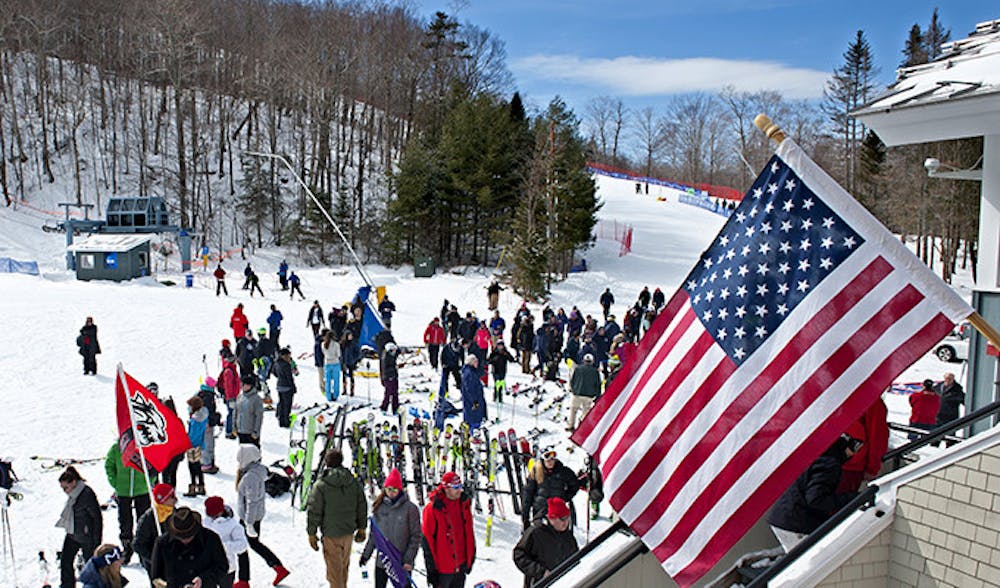The College hosted its annual Winter Carnival at the Snow Bowl this past weekend, requiring the production of a great deal of man-made snow due to unseasonably warm temperatures and a lack of snowfall this year.
The current ski season has been particularly hard for the Snow Bowl due to the warmer weather. Snow Bowl Manager Peter Mackey explained, “The hours of snowmaking are 100+ above average just to provide adequate cover for our five snowmaking trails and enough for carnival and other races.”
Snowmaking requires cold, dry air and a large water source. The Snow Bowl sources its water from two separate ponds that hold a total of about three million gallons of water. For a smaller ski area, like the Snow Bowl, around five to six hundred gallons of water are pumped up the hill each minute when snowmaking is in full capacity.
According to Mackey, the Snow Bowl uses about fifteen million gallons of water for snowmaking every year. A spring on the north side of Route 125 on the Middlebury Gap feeds the Snow Bowl’s two ponds. The running water is kept below 32 degrees Fahrenheit, yet prevented from freezing through the use of bubblers. The water then passes through two pumps at the Snow Bowl, which then move the water to hydrants lining the trails.
Through the process of nucleation, snow “flakes” are formed when water droplets are propelled into the air and allowed to nucleate. Two large diesel compressors, located at the base of the Snow Bowl, suck in outside air and remove existing moisture via a dryer. After passing through the dryer, the air is brought up the hill to hydrants that are then connected to hoses and snow guns used to combine the air and water.
From checking guns and pumps to paying someone to drive the snow groomers, snow production requires an immense amount of manpower and cost.
This year, Mackey invested in a product called SNOWMAX, which adds pieces of dust to the water. This provides water droplets with something to crystalize with after being sprayed from the guns. It costs the Snow Bowl around 1,000 dollars to treat a million gallons of water using SNOWMAX.
Snowmaking is the biggest expense for the Bowl. While Mackey didn’t have any hard numbers, the cost of fuel and labor alone sets snowmaking apart from any other Snow Bowl cost. However, in order to make any business sense the Middlebury Snow Bowl has to make snow. Assistant Snow Bowl Manager John Nuceder said, “Making snow is a necessary evil for the Bowl.”
Changing technology has aided in the process of becoming more energy efficient. Additionally, the Snow Bowl is one of the few carbon neutral ski areas in the world, a part of Middlebury College’s effort to be carbon neutral by 2016.
Even with the carnival over for the year, the staff is not yet finished. The Snow Bowl is hosting the the Vermont high school state skiing championships this week. Mackey and his staff will be working diligently to maintain optimal snow conditions and to keep the races running smoothly.




